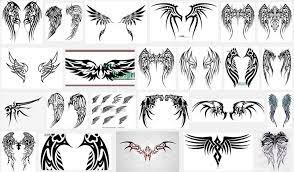
Every tattoo healing journey varies, depending on its ink type, placement, and other health-related considerations. But by following basic aftercare steps, such as cleansing and moisturizing twice daily, you should find that your tattoo heals quickly.
During the first 48 hours:
At this crucial stage in its healing, your tattoo must remain clean and protected from bacteria that could irritate its ink or accelerate its fade. Your hands provide a breeding ground for bacteria which could wreak havoc with your ink, leading to infection or premature fading.
During the first week:
Within the first week, it’s normal for your tattoo to become red, swollen, and tender; these symptoms should gradually dissipate daily. As part of the healing process, picking and scratching at your tattoo may be necessary, though you must avoid doing this as this could delay recovery time and potentially result in scarring or loss of ink.
During the second week:
Within a week, fluid leakage and redness should have subsided significantly, and the skin may begin to scab – an essential natural healing process. Scabbing and peeling may cause discomfort, but resist the urge to scratch! Scratching could push more of your tattoo’s protective covering to peel away, potentially exposing it to bacteria that hinder its healing process.
During the third week:
By week three, initial redness and oozing should have subsided significantly, healthy cells replacing dead ones, and nearly complete healing in the top layer of skin. You may notice your skin flaking and scabbing; this is perfectly natural and part of the healing process.
During the fourth week:
By week four, your new tattoo should have started showing through! This indicates that its top layer has healed successfully, and its ink can begin to be seen! At this stage, your tattoo may look slightly blurred or shiny – this is perfectly normal as your skin undergoes natural regeneration and exfoliation.
During the fifth week:
Within this week, your tattoo begins to peel away as dry skin cells exfoliate from its top layer. This process is part of its healing process. tattoos often fade over time. As this phase passes, your tattoo will regain its vibrant appearance. At this stage, it’s crucial that your skin remains lightly moisturized and refrain from picking at any scabbing; otherwise, it could dislodge ink from deep layers of the skin, resulting in its removal and potentially causing distortion or fading to your design.
During the sixth week:
Your tattoo may now have dried and begun to scab, which may cause itchy spots on its surface. This should be fine as part of its natural healing process as long as you always keep the area clean and dry.
During the seventh week:
Within this week, your tattoo’s top layer of skin will begin to repair itself, peel, and may cause itchy irritation. Scabs will form and may start to create along the perimeter. A thin ointment like Vaseline may help soothe itching; alternatively, Zensa Healing Cream contains shea butter and cucumber extract, which can provide soothing relief from an itchy tattoo.
During the eighth week:
Your tattoo’s healing begins this week as your body releases plasma and blood from its tissues to your tattoo site. It’s normal and a sign of your skin healing; therefore, you must maintain cleaning and moisturizing procedures for your tattoo as per its artist’s instructions.

